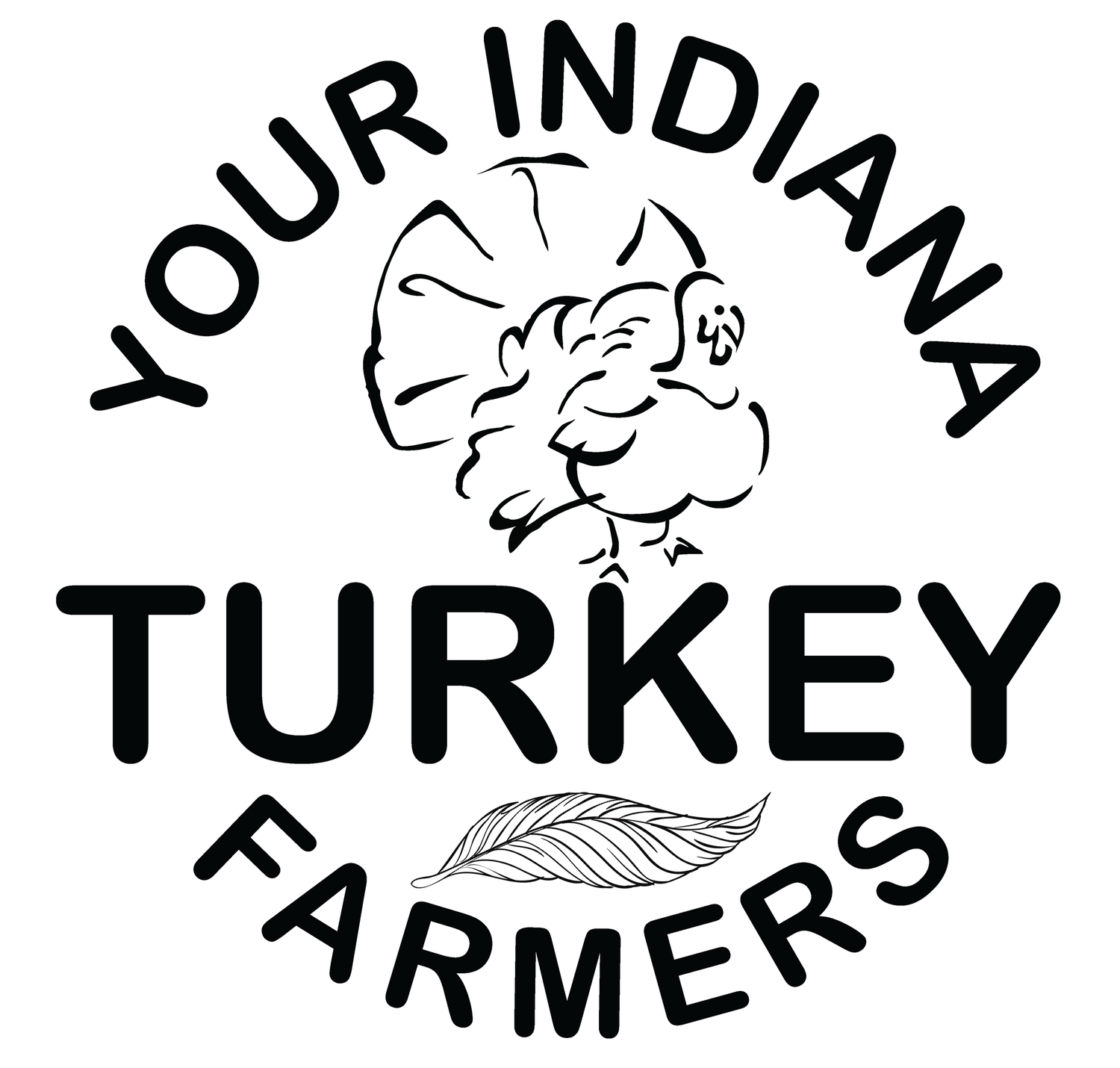No One Cares for a Turkey More Than the Turkey Farmer!
Caring for turkey flocks includes a special focus on animal welfare. The health and well-being of growing turkeys is top-of-mind for turkey growers as they routinely patrol barns in search of signs that could prove problematic. Monitoring the flock includes confirming the turkeys have continuous access to fresh water, clean feathers, round, prominent eyes and general curiosity with human interaction.
To ensure animal welfare practices are upheld throughout the industry, the National Turkey Federation works closely with America’s turkey growers, veterinarians and industry experts to develop and maintain strict Standards of Conduct and Animal Care Guidelines for raising healthy birds in a safe environment at every stage of a turkey’s lifecycle. These standards align with ethical treatment of animals, production of wholesome quality meat, respect and value of the turkey farmers and the wise use of land and water resources.
Healthy Birds are Our Top Priority
All turkeys are both steroid and hormone free. No hormones have been approved for use in turkeys. FDA approved antibiotics are used at times to help suppress microorganisms, prevent disease and ensure that consumers receive a healthy product. A withdrawal period is required after antibiotics are given before the turkey can be sent to market. This ensures that no substances remain in the body of the turkey that may come into contact with the consumer.
To learn more, check out this video: Turkey Truths: Seeing through the Myths on Hormones and Steroids.
Turkey Consumption
Turkey consumption has nearly doubled since 1970 (8.2 pounds per capita), as consumer education and awareness of the nutritional value and taste of turkey products continue to increase. For instance, ground turkey has seen a significant increase in popularity as a nutrient-rich, lower fat substitute for ground beef.
In 2023, U.S. consumption of turkey was 4.96 billion pounds and 14.8 pounds per capita.
Are Turkeys Raised in Cages?
No. Turkeys are raised in specially designed, environmentally controlled barns that provide maximum protection from predators, disease and weather extremes. Except for breeding and transportation purposes, turkeys can roam freely within their house.
To learn more, check out this video: Turkey Truths: Seeing through the Myths on Cages
Turkeys Eat a Balanced Diet of Corn and Soybean meal.
The Corn and Soybean Meal is mixed with a supplement of vitamins and minerals. Fresh water is available at all times. On average it takes 75-80 pounds of feed to raise a 30-pound turkey. The hen usually takes 14 weeks and weighs 15.3 pounds when processed. The tom takes 18 weeks to reach a market weight of 33 pounds.
USPOULTRY's 360-Degree Virtual Reality Turkey Farm Video Tour
Visit a turkey farm without even stepping outside! The U.S. Poultry & Egg Association (USPOULTRY) recently released a 360° virtual reality video giving viewers an inside look at how turkeys are raised, and the careful measures farmers take as they grow. The virtual reality video allows a panoramic view of the farm by using arrows to look up, down, side-to-side, front and back from the original starting point. This is a great resource for the public to see just how turkey operations function and the meticulous care that goes into growing healthy birds.
**While the video is playing, use your mouse to drag the video around while it’s playing!!
Turkey Exports
The U.S. turkey industry currently exports more than 10 percent of its products, and trade remains a market segment with growth potential for the industry. In 2023, 490 million pounds of U.S. turkey was exported.
The ratification of the U.S.-Mexico-Canada Agreement in 2020 was a significant step for the turkey industry, fortifying two critical relationships with Mexico and Canada. Mexico is by far the largest export market for U.S. turkey products.
The expansion of U.S. turkey products to foreign markets not only benefits the economy, but also sustains thousands of American jobs and allows turkey producers to provide a healthful, nutritious protein option to people around the world. NTF continues to identify markets of interest and plays a significant role in building relationships and securing trade opportunities in the global marketplace.
Turkey Trivia!!
Q: What breed of turkeys do farmers raise?
A: The most common breed of turkey that commercial farmers raise is called the "Broad Breasted White." This breed of turkey has all white feathers. To read more about Broad Breasted White Turkeys CLICK HERE.
Q: How many turkeys are produced in Indiana?
A: In 2021 Indiana produced 20.5 million turkeys. Indiana is currently the fourth largest producer of turkey in the United States. This may seem like a lot of turkeys, but the top producing state (Minnesota) produces twice that amount of turkeys in a year. About 216.5 million turkeys were raised in the USA in 2021.
Q: What do call a baby turkey?
A: A baby turkey is called a poult. A male turkey is called a tom. A female turkey is called a hen. Did you know that only tom turkeys gobble. Hen turkeys make a clicking noise.
Further Reading
ALL ABOUT INDIANA RAISED TURKEY - Learn how the Hoosier Turkey Industry cares for their birds.
TURKEY TALK FOR KIDS - Perfect for kids wanting to learn a little about turkeys in Indiana. Flyer includes a word search, match the picture with its name game and a turkey to color.
SMALL FLOCK TURKEY PRODUCTION - The Indiana State Poultry Association has information on turkeys raised by small flock enthusiasts.






